Snorkeling In Bali
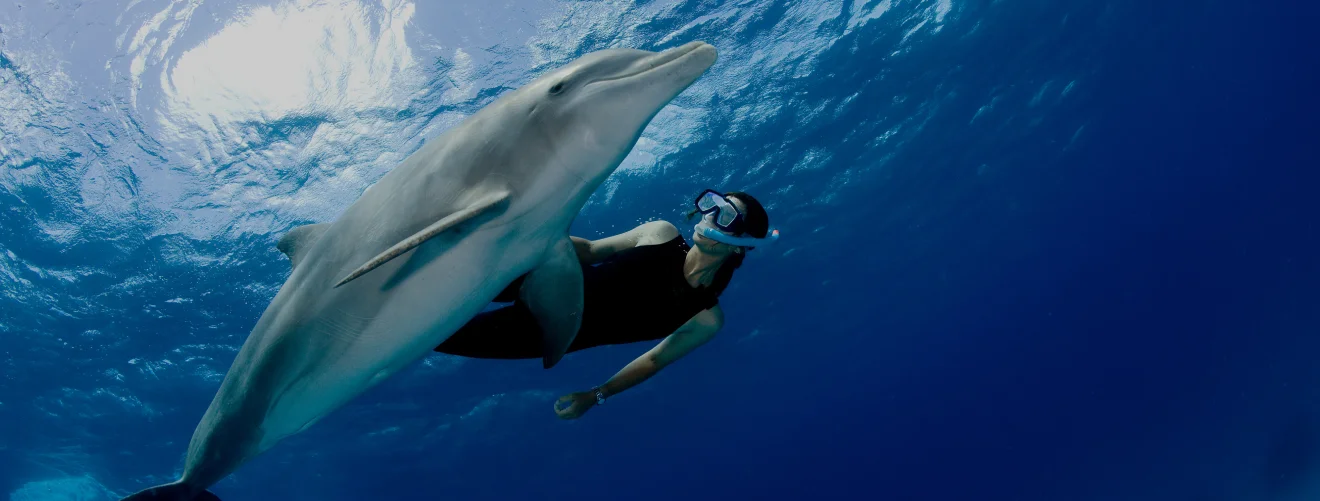
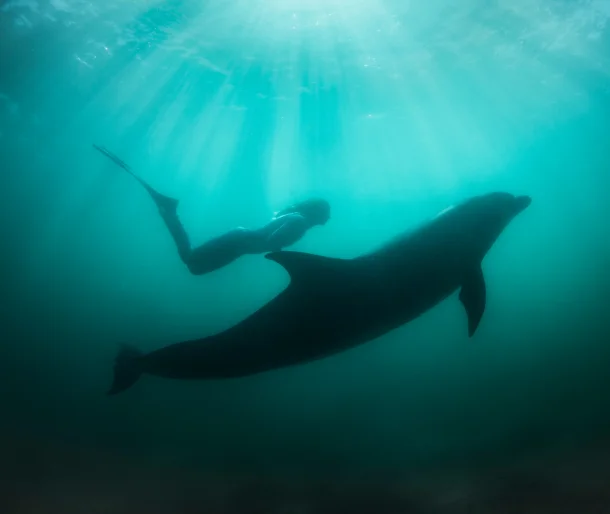
Snorkeling in Bali ? 2023 Ultimate Guide
Bali, known as the Island of Gods, draws thousands of tourists annually due to its affluent culture, historical sites, and diverse terrains such as the famous rice fields in Ubud. It's also a paradise for marine enthusiasts.
Snorkelers and divers can dive into the underwater world of Bali to encounter vibrant coral reefs with abundant marine life. This article will provide you with all the information you need to know about snorkeling in Bali, including the best time to visit and where to spot the majestic Manta Rays, highest chances for swimming with turtles or where to go shipwreck snorkeling.
Where to go Snorkeling?
Bali is a true paradise for all types of tourists. The famous golden sand beaches of Bali can be found all around the island each with their unique features. But although the Bali beaches are in abundance, snorkeling is not ideal in most of them because either there is nothing to see, visibility is not the best or the beach is more suitable for surfers due to the big waves. The popular tourist beaches such as Kuta, Jimbaran, Seminyak, Sanur and Nusa Dua offer beautiful sandy coasts on the west and south coasts of Bali. These beaches are excellent for sun bathing or surfing but definitely not for snorkeling. The southwest beaches of Bali: Padang Padang, or Uluwatu coast are paradise for experienced surfers as the areas bring big waves. The best snorkeling in Bali is on the East, Northeast and Southeast side of the island. In these areas, the water surface is calm and underwater snorkelers and divers can find stunning coral reefs packed with diverse tropical marine life such as: turtles, octopus, sea snakes, and the list can go on.
Now Let's name the precise locations where to find snorkeling in Bali:- Nusa Penida
- Tulamben
- Amed
- Padang Bai
- Menjangan
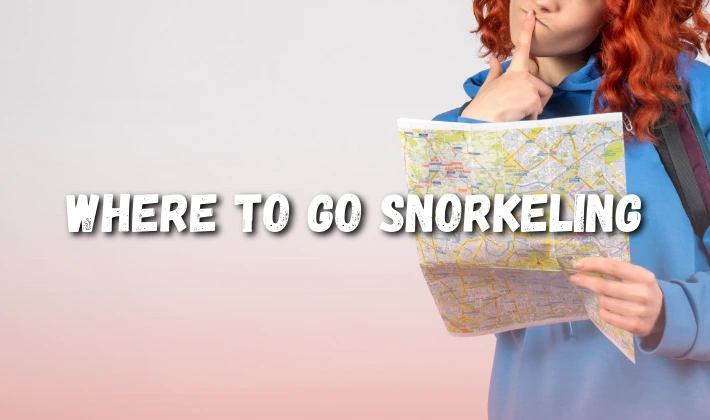
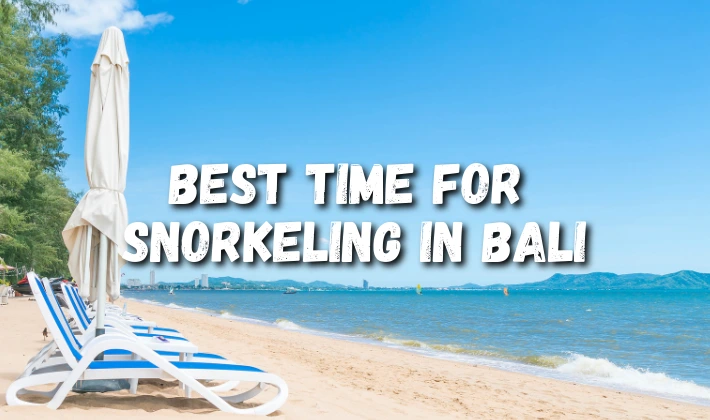
Best time for snorkeling in Bali
Very well known around the world, Bali has a tropical climate with hot and humid weather all year-round. There are two seasons in Bali: a long dry season generally starting from April going to September/October and a more shorter rainy season starting October until March. Although the timing of when the rainy season actually starts and ends is always different year over year, the above time frames are a good guidelines for tourists to plan their holiday in Bali. Of course if you are a water enthusiast and if diving or snorkeling is your thing, it is best to avoid the rainy season because the ocean can be sometimes rough with high waves and visibility may occasionally not be ideal due to the rain. The rain and winds are the main
considerations when planning your snorkeling in Bali. Although rare boat trips may also be cancelled so It's wise to say that you should check the weather forecast and coordinate with your chosen snorkeling operator or dive center before confirming a trip.
But Don't let all of this scare you, there are dry beautiful sunny days during the rainy season and if You're staying in Bali for approximately 7 to 14 days, you will experience both rain and sun.
Of course, the wet season is low while the dry season is peak tourism in Bali, with more tourists, crowded beaches, and higher hotel and excursion prices. One could say that the best time to visit Bali for snorkeling is in May, June, or September when the weather is pleasant and general prices are lower.
Travel tip: even if you plan to visit Bali in dry season, prepare a sweater, and a pair of long trousers, especially if You're planning to go to mountains in the center of the island or hike one of the volcanos! Weather in Bali changes quickly and it can happen that there is bright sunshine at the beach and raining just a few kilometers away more up north.
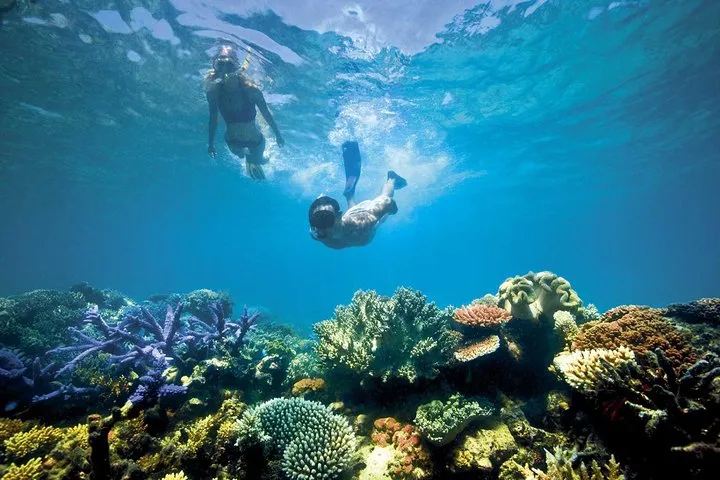
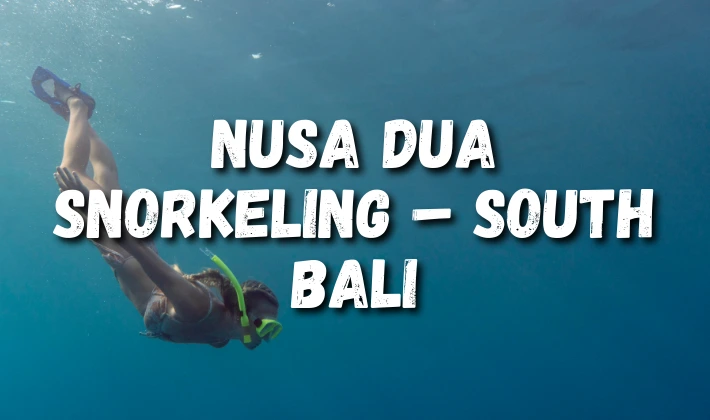
Nusa Dua Snorkeling - South Bali
As we mentioned above, snorkeling in South Bali is not the best mainly because the corals are lacking and There's almost nothing to see. It is though a good place to practice swimming or testing your snorkeling gear.
For Nusa Dua snorkeling it is recommended only for beginners or kids as an introduction. So a better option for snorkeling in Bali is to book a Nusa Penida Manta snorkeling trip. It is more expensive compared to any of the other snorkeling spots in Bali but it Doesn't get any better than that.
Snorkeling Padang Bai and White Sand Beach - East Bali
Padang Bai is one of the transit points for when visiting Lombok or the Gili islands but this is also a proper place for snorkeling in Bali. Stunning views of the Bali coast, beautiful coral reefs, diverse tropical marine life and everything else you can imagine from a tropical island like Bali.
Although Padang Bai has a total of 9 diving and snorkeling spots, in this area there are two main beaches for snorkeling famously known as Blue Lagoon and White Sand Beach.


Blue Lagoon Padang Bai
Blue Lagoon It's perhaps Padang Bai's most popular snorkeling spot. It can be visited from land and from boat which makes it ideal for families or beginner snorkelers.
Best time to visit Padang Bai Blue Lagoon is always in the morning to be able to enjoy the best conditions both on the surface and underwater. The coral reef is healthy and colourful and the marine life is diverse often spotting turtles swimming around.
Despite its beauty, plastic pollution is an issue at Blue Lagoon particularly during the wet season as the rain and currents sometimes cause various plastic items to appear on the surface. People who visit Blue Lagoon often say it ?could be a better spot if it would be cleaned more often?.
To arrive at Blue Lagoon by boat you must grab one of the traditional spider boats called ?Jukung?. The boat ride is a short 5 minutes from the Padang Bai harbour, turning left when coming out of the bay.
White Sand Beach
Famous known as White Sand Beach (in Indonesian translation: Pantai Pasir Putih or Bias Putih), this is literally a small white sand beach which became popular because of the whitish sand that is not so common on Bali's East or North coast where the sand is predominately volcanic black sand. White Sand Beach is considered a hidden beach although is located just outside of the Padang Bai harbour, on the right side.
Snorkeling at White Sand Beach is very good, competing strongly with the likes of Blue Lagoon and the other snorkeling spots in Padang Bai.
The reef is White Sand Beach starts shallow and near the beach line which makes it easily accessible both from the beach and from the boat. If you want to visit White Sand Beach by yourself, you can rent snorkeling gear from the harbour for about 80,000 IDR (5 USD).
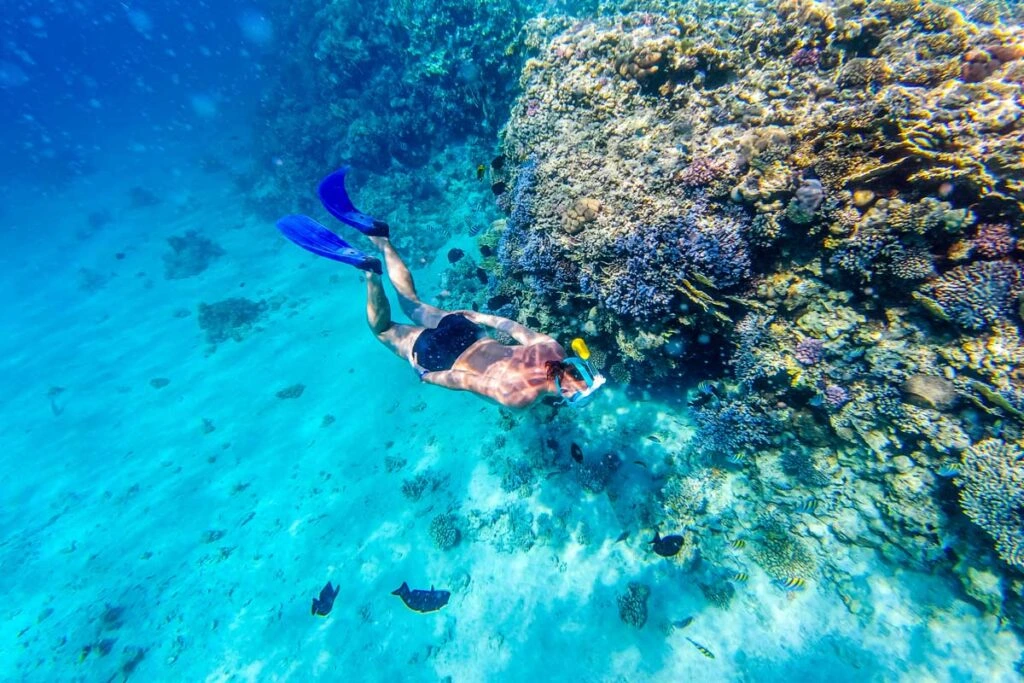

Tulamben and Amed snorkeling - North East Bali
Tulamben and Amed are two small finishing villages located on the North East coast of Bali, near the famous Agung volcano. They became famous for diving and for snorkeling in Bali after the discovery of the USAT Liberty shipwreck in Tulamben and the stunning coral reefs and marine life in Amed.
Amed snorkeling beaches
Amed is perhaps one of the most colourful spots for snorkeling in Bali, competing directly with Nusa Penida. The coral reef both artificial and natural is simply stunning packed with hard and soft corals home to a diverse marine life never seen before. The volcanic black sand beach in Amed also give the place a special feeling.
Although Amed is a small fishing village, it does come with quite a few snorkeling spots:- Amed Beach reef (artificial reef, healthy corals, turtles)
- Jemeluk Bay (coral reef on the right side, Submarine Post Office)
- Lipah Beach (hard coral patches and vibrant soft corals)
- Bunutan Reef (hard corals including large table corals)
- Japanese Shipwreck (small shipwreck)
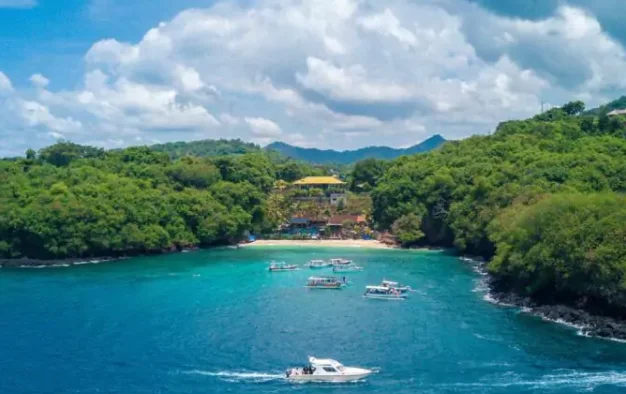
Tulamben shipwreck snorkeling and Coral Garden
Similar to its neighbour village Amed, Tulamben has also developed along the years to become a popular spot for snorkeling in Bali and primarily because of the sunken cargo ship, the 126 meters (413 feet) USAT Liberty.
The shipwreck is visited by divers every day but snorkelers can snorkel and freedive here as the shallowest part of the wreck is just around 5 meters depth. Of course, the shipwreck has attracted marine life of all sorts of sizes and often here divers and snorkelers can see Humhead Parrotfish and Black Tip Reef Sharks.
Best conditions for snorkeling in Tulamben is as always in the morning up until just around noon to afternoon. Staying in Tulamben is great as you can snorkel early morning but if you are visiting from the south of Bali, the car trip to reach Tulamben takes approximately 2.5 hours which means you will be snorkeling here at approximately 11AM and that is quite alright.
The Tulamben shipwreck is the most popular snorkeling spot but you should not miss swimming at Coral Garden also. Coral Garden is located near the shipwreck and It's easily reachable from the shore with just an easy swim. At Coral Garden the best is the diverse marine life but also the underwater temple that has been placed here by the locals.
Fun Fact: The Tulamben shipwreck is much bigger than Amed Japanese wreck. At the USAT Liberty wreck you can penetrate through the cargo hall, therefore, it can offer a more significant experience compared to the Japanese shipwreck.
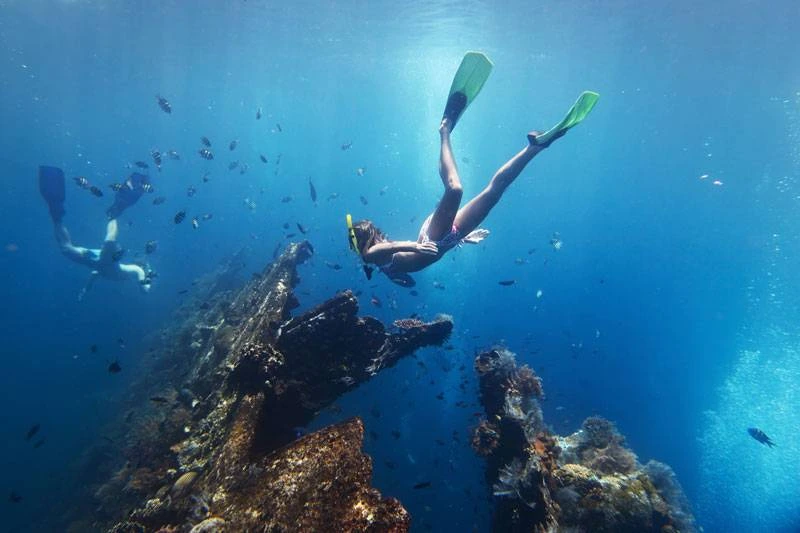

Menjangan Island and Pemuteran Bay - North West Bali
Menjangan and Pemuteran are two of Bali's secluded tourist areas mainly because of the distance and time it takes to get there from the popular busy areas in the south.
With unique landscapes, dolphin watching and some of the best waterfalls Bali has to offer, Menjangan and Pemuteran are also home to some of the best spots for snorkeling in Bali, of course mainly because the area is barely touched by large scale tourism.
Menjangan Island National Park
Menjangan in Indonesian translation means ?Deer? and it gets its name by the huge number of deers that live here. Menjangan is an island located 8km (4 miles) off the north coast of Bali and It's protected by the local and central government of Indonesia.
Spotting the deers taking a bath on the shore of the island is a unique experience but the island of Menjangan is also popular for diving and snorkeling. Due to the fact that It's a protected national park, tourism here is regulated which over time has preserved the underwater life.
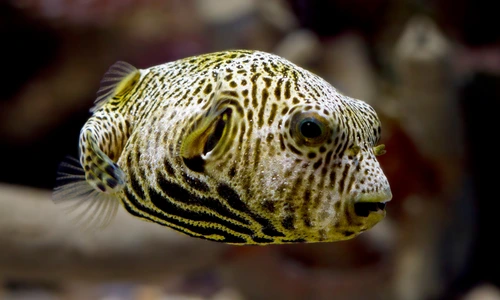
Pemuteran Biorock snorkeling
Yet another typical Balinese small fishing village that became popular due to the underwater life. Pemuteran is home to the largest artificial reef project in the world! Pemuteran Biorock is a complex conservation project started by local community in the year of 2000. Now, the total length of the reef is more than 300 meters forming a trail in shallow water that snorkelers or divers can enjoy.
Located in front of Taman Sari Resort, Pemuteran Biorock offers a protected area free of currents which makes it an ideal spot for beginner divers and snorkelers seeking the best spots for snorkeling in Bali.
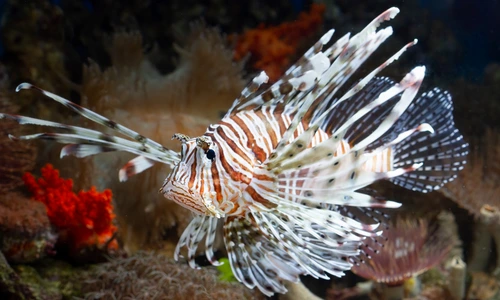

Nusa Penida - Majestic Manta Rays and the best coral reefs in Bali
By far and without a doubt, the highlight of snorkeling in Bali is Nusa Penida because this is the one and only place where Manta Rays can be seen for both diving and snorkeling and where the best coral reefs are.
Nusa Penida is an island located south of Bali approximately 31km (19 miles) away reachable exclusively by speedboat with a decent ride of roughly 45 minutes.
The main diving and snorkeling spots in Nusa Penida are found on the island's west and north coasts and we can mention the most popular ones:
- Manta Point
- Manta Bay
- Crystal Bay
- Toya Pakeh
- SD Point
- PED
- Mangrove
Ultimate Snorkeling and Diving
For? Nusa Penida diving , the dive spots here are simply amazing and not only because of the Manta Rays but also because of spotting the elusive Mola Mola during the dry season of June to October when the water temperatures in Manta Point, Crystal Bay and Mangrove go down to a freezing 16 Celsius (60F). Snorkeling in Bali never gets any better than Nusa Penida. Snorkeling with the Manta Rays is beginner friendly and with the right conditions even children can enjoy here. The typical trip to Nusa Penida snorkeling takes tourists to Manta Point, Crystal Bay and one of the drift dives on the north coast, most frequently SD Point and Mangrove. The coral reefs in the north of Nusa Penida is simply amazing and tourists often claim that ?It's better than the Great Barrier Reef at this time?. We might add that this statement is true, the north coast of Nusa Penida features a long massive never-ending coral reef filled with schools of fish.
Oh and by the way, pods of dolphins are often seen here either on the surface and even underwater for scuba divers. Do not hesitate to visit Nusa Penida if you plan a one day trip for snorkeling in Bali. Tourist Tip: When planning to visit Nusa Penida for snorkeling, ensure with your chosen operator or dive center to visit Manta Point and not Manta Bay. You have higher chances to spot Mantas in Manta Point compared to Manta Bay. Also, the Manta Rays are bigger in Manta Point.
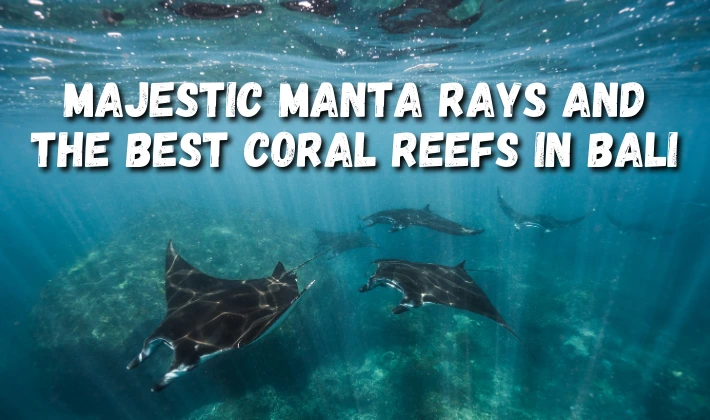
First Time Snorkeling in Bali
Lorem ipsum dolor sit amet consectetur. In rutrum consequat aliquam duis. Nisi molestie.
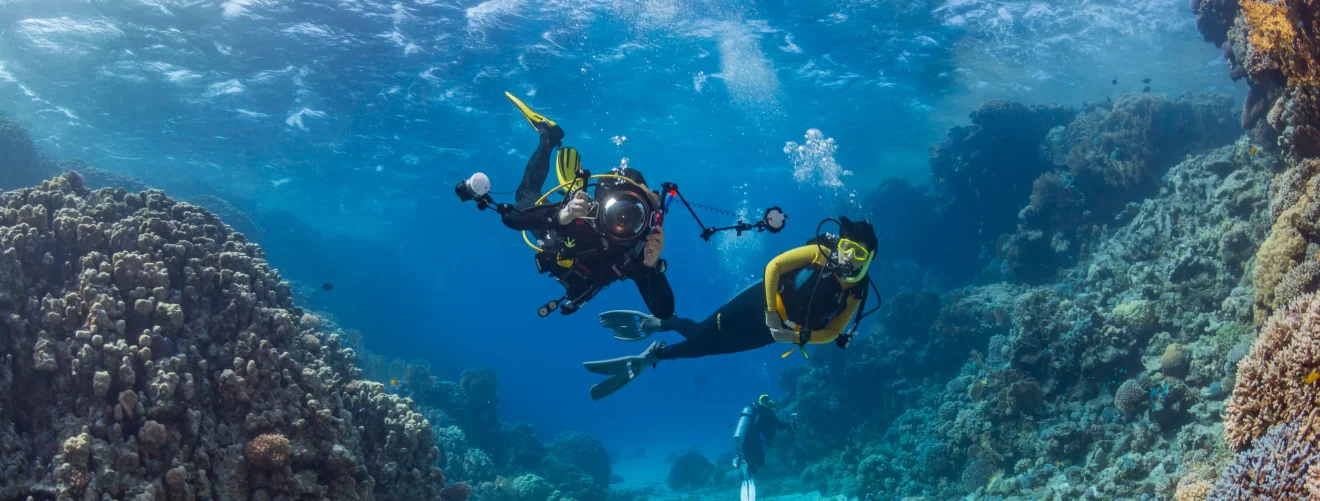
Search for boat rental companies that thinks of safety first
You will find there are too many operators and boat rental companies who all sell the same snorkeling trips. Choose one that has the best reviews and who thinks safety is first. A low price show not be your main focus.
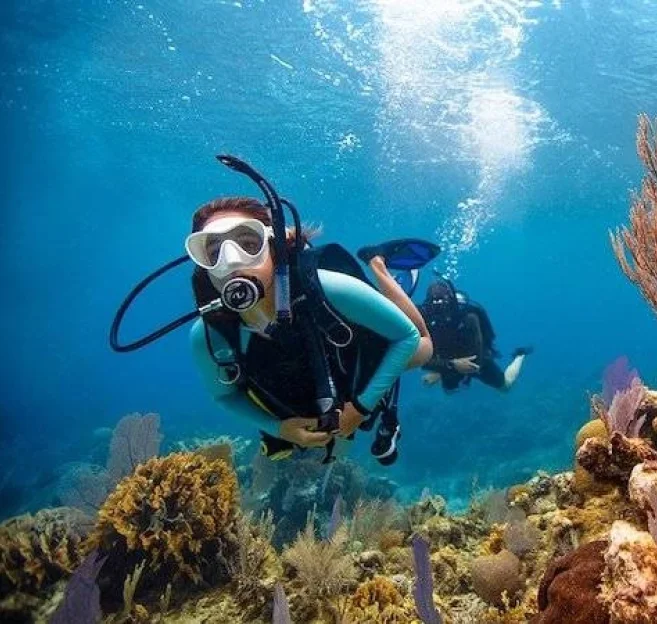
Take a sea sickness tablet before boarding if you have a weaker stomach
Especially on the Nusa Penida snorkeling trip, make sure to take a sea sickness tablet. The professional dive centers or operators should offer this.
Travel Tip: Ginger or ginger tea is a natural remedy for sea sickness.
 1.webp)
Comfort is key
Don't join a snorkeling trip if you Don't feel comfortable for any reason. Comfort can come from a bad stomach, it can be a simple headache or perhaps you feel that the operator Doesn't seem as professional as you thought. Comfort is key, better postpone or cancel the trip.
Travel Tip: Don't go snorkeling if you are hangover because the boat ride and being on the surface of the water will amplify the effects of the hangover.
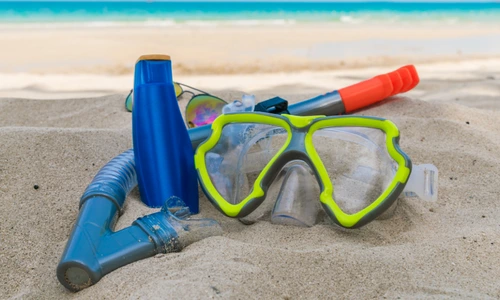
Spit on the mask or use baby shampoo
If It's your first time snorkeling you will discover that the snorkeling mask fogs up and you Can't see a thing. The trick is to spit inside it and rub the lens but if this feels strange to you, use baby shampoo or dish soap which have the same effect. Make sure to rinse the mask before putting it on your face.
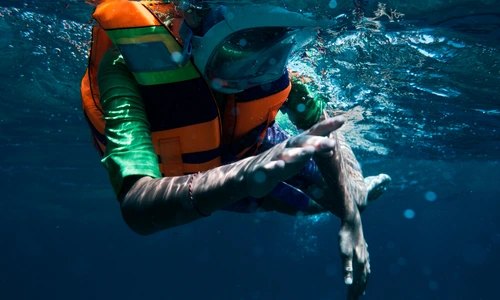
Pay attention to the guide when they explain about the snorkeling technique
This is safety 101 so you should listen carefully to the safety briefing you may receive from your snorkeling guide. All operators must provide a snorkeling safety briefing and if they Don't, ask for one or Don't go in the water.
Travel Tip: When joining a snorkeling trip, ask the guide what to look out for. As a general rule, if You're snorkeling next to a rocky bay, Don't go too close to the rocks.
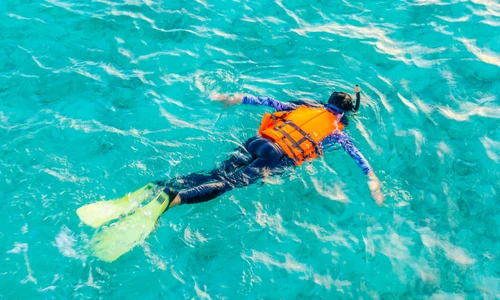
Don't touch anything underwater
This is an unwritten rule and your primary code of conduct when doing any snorkeling trip especially when snorkeling in Bali. If you try you may touch Fire Coral or a poisonous fish such as a Scorpion Fish or Lion Fish.
Travel Tip: Fire Coral is common and when touching it you will get together with a rash also a strong burning sensation that may last up to 2-3 weeks if left untreated.
Tips For Snorkeling
Snorkeling is a fun water activity but like anything else, it also comes with small, medium and high dangers. Here are the most common tips for snorkeling in Bali:
- Don't use sunscreen. It damages the coral reefs and hurts the marine life. Yes, even the reef safe ones.
- Always use a rash guard, a t-shirt or anything else to protect your skin for sunburn.
- Avoid full face masks and try to use a traditional mask and snorkel. Full face masks tend to hold too much CO2 inside the mask which can become dangerous.
- Avoid snorkeling in large groups. Ask your operator how large are the groups and if It's more than 4 for 1 snorkeling guide, find another operator.
- Don't drink and swim. Avoid snorkeling in Bali if you have a hangover.
- And lastly, Don't forget to have fun!

Frequently Ask Question
Everything you need to know about the product and billing. Can't find the answer You're looking for? Please chat to our friendly team.
See More FAQsDoes Bali have good snorkeling?
What time of year is best to snorkel in Bali?
How much is snorkeling in Bali?
How many days in Bali is enough?
Are Bali beaches safe to swim?
Where is the clearest water in Bali?
Can you swim in Blue Lagoon Bali?
Are there white sharks in Bali?
Join more than 1,000 monthly guests from all around the world visiting us for Scuba Diving, PADI Courses, Snorkeling, and Freediving.
Email or contact us by WhatsApp. We reply promptly between 9AM and 5PM, every day.